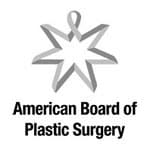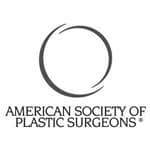Forehead Reduction San Francisco
Men and women with a high hairline and large forehead often struggle with facial imbalance and feeling self-conscious about the upper third of their face. Forehead reduction is a commonly performed cosmetic procedure that can correct a high forehead, effectively lowering the hairline for a more balanced look.
If you consider yourself someone who struggles with a high forehead and are interested in surgery, there’s no doubt you want the best forehead reduction surgeon to perform your procedure. In this case, look no further than double board certified plastic surgeon Dr. David Sieber who routinely performs forehead reduction procedures at his San Francisco practice.
Meet Dr. David Sieber – Plastic Surgeon San Francisco

Dr. Sieber went on to become certified by the American Board of Plastic Surgery and has done thousands of Cosmetic surgeries over the last 9 years of practice.
Contents
What Is Forehead Reduction Surgery?
Also called hairline lowering, forehead reduction is a plastic surgery procedure that removes a small band of skin from the top of the forehead, then gently stretches the scalp downward to lower the hairline. This can help achieve a more naturally high hairline that balances out the features, creating facial harmony.
The procedure typically takes around two hours and is performed with the patient under general anesthesia. Once healed, the patient’s forehead (the distance between their eyebrows and hairline) will be shortened — usually by around two to three centimeters.
Am I a Candidate for Hairline Lowering?
Despite being a common hereditary and natural characteristic, patients seeking a hairline lowering operation struggle with having a large forehead. They feel uncomfortable and self-conscious, and often they’ve tried other treatments that have failed.
Furthermore, even while some female hair styles (such as bangs or having the hair combed forward) can help to camouflage this issue, many patients seek a more permanent solution. In particular, women want a more desirable female hairline so they can choose the hair styling methods that appeal to them, instead of just hiding their forehead.
In addition to having these particular pain points, good candidates for scalp surgery to lower the hairline should also be in strong physical health. They should be non-smokers and not currently struggling with any serious medical conditions or ongoing treatments.
Hairline Lowering Procedure
An incision is made right along the hairline and is done in a manner such that the final scar is barely visible. The natural flexibility of the scalp is then further loosened surgically so that the scalp can be gently pulled forward/lowered.
With the stretched scalp downward, a precise amount of upper forehead skin is then removed. This depends on the patient’s specific anatomy. For those with a very tight scalp, the amount of forehead reduction may be less when compared with those who have more scalp laxity.
The patient and surgeon will have discussed several potential hairline positions and contours prior to surgery to ensure that a desirable result is achieved. The shortened forehead is then sutured to the lowered hairline. The stitches remain in place for approximately one week.
One-Stage vs Two-Stage Forehead Reduction
Many patients only require a one-stage forehead reduction. This procedure is outlined above. With patients who require more significant hairline lowering, the two-stage approach may be used.
With the two-stage approach, stage one involves the insertion of tissue expanders beneath the scalp. Over a period of six to eight weeks, these expanders will stretch the skin in preparation for stage two, the hairline lowering procedure itself.
Forehead Reduction Recovery
Directly following surgery, patients will have a light compression garment placed over the incision area. A small amount of swelling and bruising are normal and should resolve quickly. Some slight discomfort is to be expected, but pain medication will be prescribed to ease the soreness.
Every patient will have a unique experience during their hairline lowering recovery period. The initial forehead reduction surgery healing process usually takes one to two weeks. Patients will want to take at least one week off from work and sometimes more.
Forehead Reduction Surgery Cost
Forehead reduction cost can vary significantly depending on your anatomy, your desired results, and other factors. To learn more about the cost of your forehead reduction, please call to schedule a consultation with Dr. Sieber.
FREQUENTLY ASKED QUESTIONS
Is hairline lowering risky?
Like other well-established plastic surgeries, hairline lowering surgery is considered safe. However, there are risks with all types of surgery. With hairline lowering (forehead reduction), the main risks to consider include a suboptimal scar, temporary scalp hair loss, or (very rarely) permanent hair loss.
Where can I get hairline lowering surgery near me?
Double board certified plastic surgeon Dr. David Sieber performs forehead reduction surgery at his San Francisco practice. Call to book your consultation with Dr. Sieber today.
How often do men get hairline lowering surgery?
As for frequency of hairline lowering procedure male patients are less common than female patients. If men want a lower hairline, it may be more common for them to seek hair transplant surgery, which can create a similar outcome as hairline lowering surgery: the illusion of a shorter forehead.
In terms of age, most anyone can undergo this procedure as long as they are in good health.
Can I lower hairline with hair transplant?
Yes, to an extent, you can create the appearance of a lower hairline using hair restoration procedures like hair transplants. This solution often eliminates frontal thinning. Follicular unit hair transplantation is the most common form of this procedure, but other hair restoration procedures exist as well.
It’s important to discuss realistic expectations with your surgeon if you plan to get a hair transplant to shorten your forehead. Some patients with a large, mature male hairline may request new hairlines that are unnaturally low. It’s best to trust a well-experienced surgeon’s critical eye as you make plans for surgery.
Is a forehead reduction scar noticeable?
Ideally, the scar that remains from a forehead reduction will be within the hair bearing scalp and will blend in nicely with the hairline. The incision will be placed just at the edge of the hairline so that it is nearly invisible once healed.
How much is a forehead reduction?
Forehead reduction cost varies. Patients are seen and evaluated on a case by case basis. Please book a consultation to discuss your prospective cost for surgery.
How is forehead reduction different from a hair transplant?
When it comes to forehead reduction vs hair transplant, both can create the appearance of a smaller forehead and a lowered hairline, but the two procedures are quite different. Forehead reduction removes a section of hairless skin from the top of the forehead, right below the hairline.
Hair transplant surgery takes healthy hairs from the back and sides of the head and transplants them create hair growth, usually on the top of the head. As a side note, brow lift surgery is also different as brow lifts only tighten and smooth the forehead and lift the brow line for a more youthful appearance.
Book Your Consultation
When preparing for a forehead reduction procedure, it’s critical to find the best forehead reduction surgeon in your area. These are not easy procedures, so experience matters a great deal. Your plastic surgeon should be board certified and well-practiced at performing forehead reduction procedures on a range of patients.
Dr. Jason Dudas is certified with significant experience performing hairline lowering surgeries. He has completed a specialized facial plastic surgery fellowship in cosmetic surgery and has extensive training in hairline advancement surgery and hair restoration surgeries as well.
Please contact our office today to book a consultation appointment with Dr. Sieber.
References
- https://e-aaps.org/journal/view.php?doi=10.14730/aaps.2017.23.1.30
- https://www.sciencedirect.com/science/article/abs/pii/S1064740620300031?via%3Dihub
*Disclaimer: Results may vary from person to person. Editorial content, before and after images, and patient testimonials do not constitute a guarantee of specific results.






